It seems we can’t find what you’re looking for. Perhaps searching can help.


Tag: ecommerce platforms




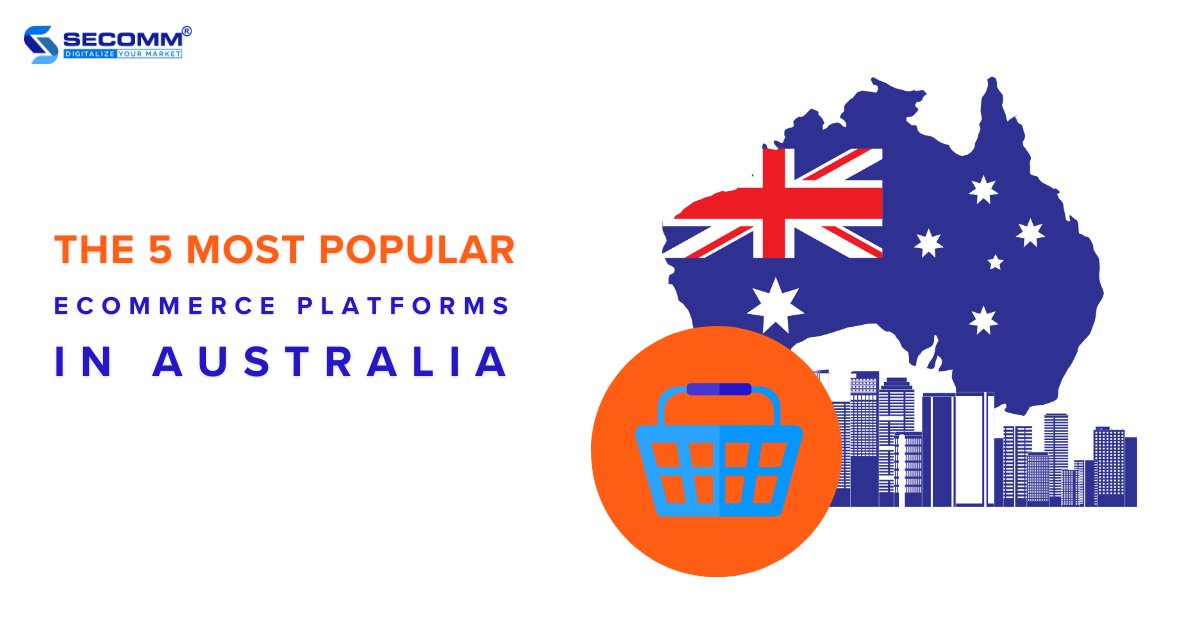
THE 5 MOST POPULAR ECOMMERCE PLATFORMS IN AUSTRALIA
The Australian eCommerce world is continually evolving alongside the constant emergence of technological solutions. As a result, there is an increasing and diverse range of choices for eCommerce platforms.
This presents both an advantage and a challenge for businesses, as selecting the right platform for building an eCommerce website is a crucial first step.
Below are the top 5 leading eCommerce platforms in Australia.
Learn more: Top 10 most-visited eCommerce websites in Australia
Magento
Magento is a globally popular open-source platform, and its prevalence extends to Australia as well. According to BuiltWith, there are currently more than 4000 live websites in Australia utilizing the platform.
With its high flexibility, businesses can effortlessly tailor features and scale the system according to their unique business requirements.
Presently, Magento provides businesses with two versions: Open Source (Free) and Adobe Commerce (Paid).
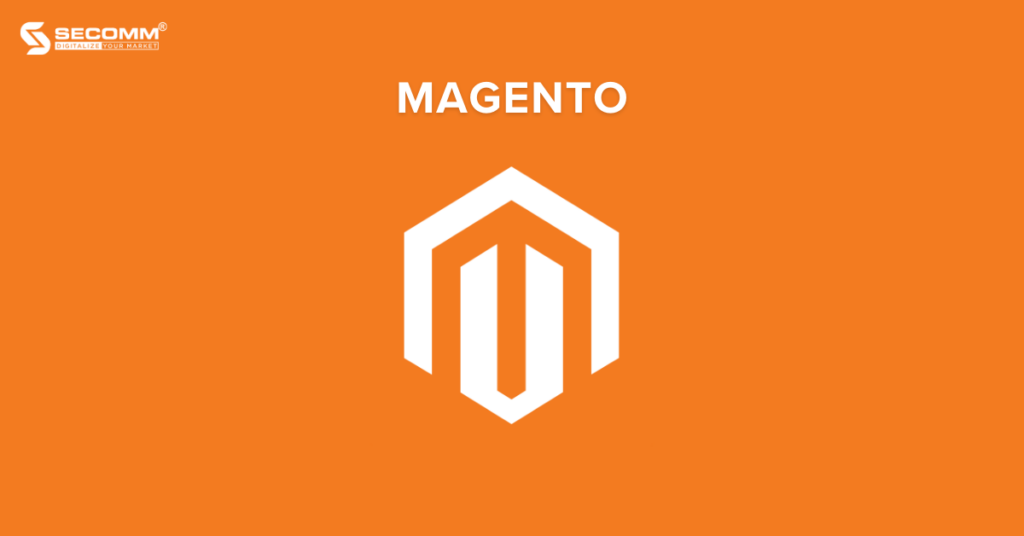
Pros:
- Best for large businesses with complex customization needs and high-budget investments.
- High customization and scalability capabilities.
- Rich built-in features and advanced functionalities compared to SaaS platforms.
- No limit on sales volume.
- Diverse range of extensions available.
- Large user community.
Cons:
- Requires a high level of technical expertise.
- Deployment time is relatively long.
- Initial costs are high.
Core feature:
- Multi-brand solution
- Inventory management
- Headless Commerce implementation
- Loyalty program development
- Advanced search
- High-security measures
- Progressive Web Apps (PWA)
- Advanced SEO
Pricing:
- The cost to implement Magento Open Source is approximately $20,000 – $50,000 per project in the first year and the time to go live ranges from 3 to 6 months depending on the project’s complexity.
- The estimated cost to implement Adobe Commerce is around $100,000 – $150,000 per project in the first year, with the time to go live ranging from 6 months to 1 year depending on the project’s complexity.
Learn more: Top Magento eCommerce websites in Australia
Shopify
Shopify is a popular SaaS platform with over 4.8 million active websites. In Australia alone, over 150 thousand online stores are operating on the platform.
Recently, the premium version of Shopify, ‘Plus,’ has garnered attention from businesses across various sectors in Australia.
These businesses may have previously deployed different eCommerce platforms and later switched to the Plus to seek a superior solution. Some businesses initially launched websites with core plans and later upgraded to ‘Plus’ to optimize their operations.
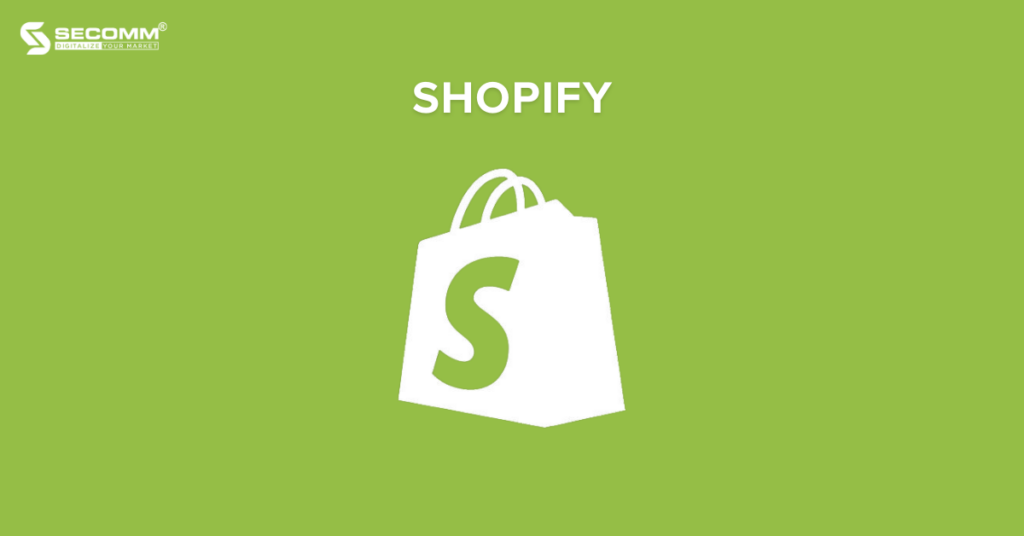
Learn more: Top eCommerce websites upgrade to Shopify Plus
Pros:
- User-friendly interface
- Provides drag-and-drop builder
- High scalability and customizability, especially with the ‘Plus’ package
- Diverse range of unique themes suitable for various industries
- Extensive app store
- Supports multiple local payment gateways
- 24/7 customer support
- Rich learning resources
- Large user community
Cons:
- On-going costs increase over time
- Limited customizability and scalability in core Shopify plans
- The eCommerce system relies on Shopify
Core feature:
- Point-Of-Sale (POS)
- Email Marketing
- Blogging
- SEO
- Multi-marketplace selling
- Automation (for Plus merchants)
- Headless Commerce (for Plus merchants)
- Composable Commerce (for Plus merchants)
- Omnichannel (for Plus merchants)
Pricing
Here are Shopify pricing plans:
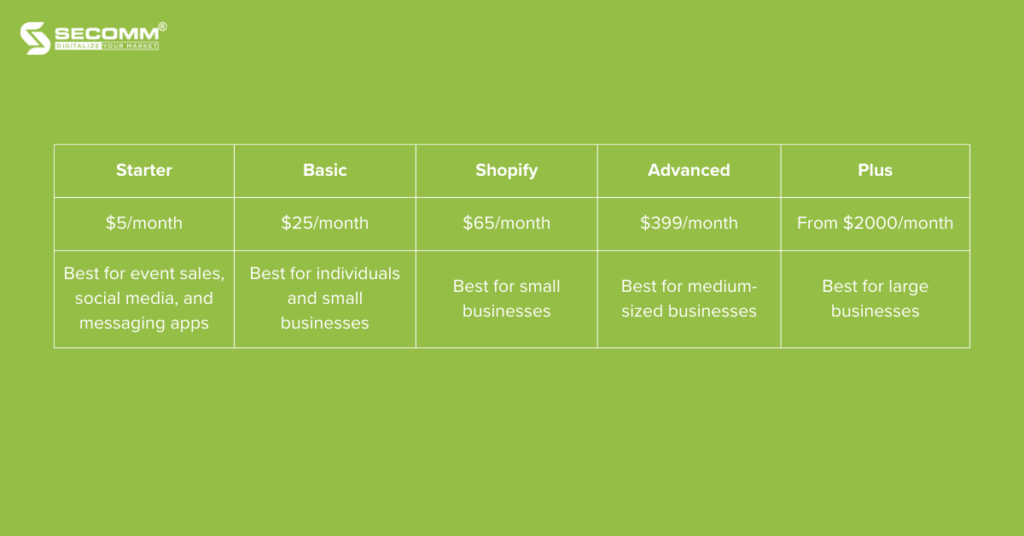
BigCommerce
BigCommerce is another popular SaaS platform worldwide, with over 43 thousand active websites. In Australia, there are more than 2 thousand active BigCommerce websites.
The standout feature of this SaaS platform is its integrated features, enabling businesses of all sizes and technical expertise to deploy eCommerce websites quickly. In addition to standard solution packages, BigCommerce offers an ‘Enterprise’ version tailored for large businesses with custom pricing.
Learn more: Top 10 eCommerce websites using BigCommerce
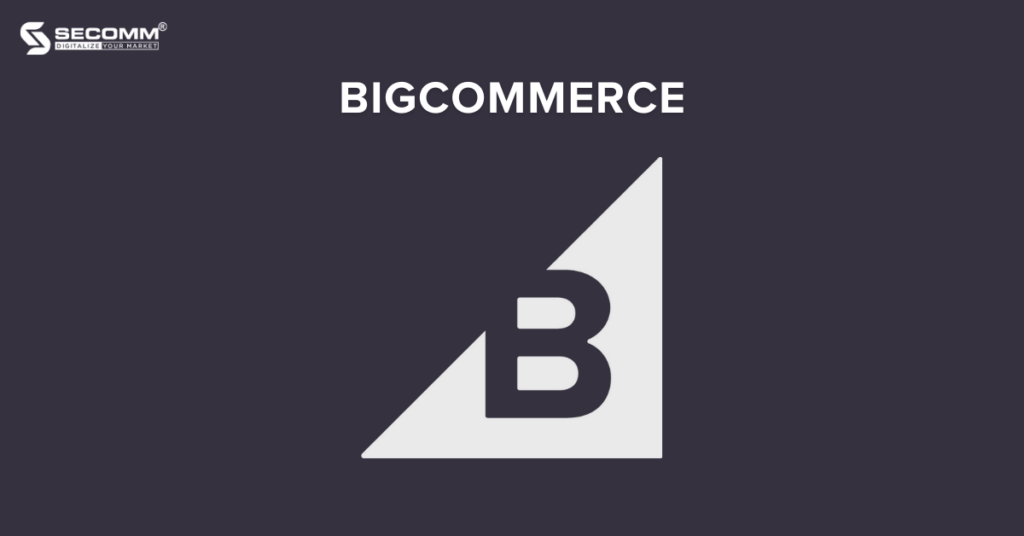
Pros:
- User-friendly interface
- Best for businesses of all sizes
- Rich integrated features
- 24/7 customer support
- Diverse affordable pricing plans
- No transaction fee
- More than 65 popular payment gateways
- Variety of themes and extensions
Cons:
- Limited online sales volumes
- On-going costs increase over time
- Limited customizability
- The eCommerce system relies on BigCommerce
Core feature:
- Point-Of-Sales (POS)
- Blogging
- SEO
- In-depth analytics and reporting
- Multi-marketplace selling
- Headless Commerce (Best for ‘Enterprise’ businesses)
- Automation (Best for ‘Enterprise’ businesses)
- Omnichannel (Best for ‘Enterprise’ businesses)
Pricing
Here are BigCommerce pricing plans:
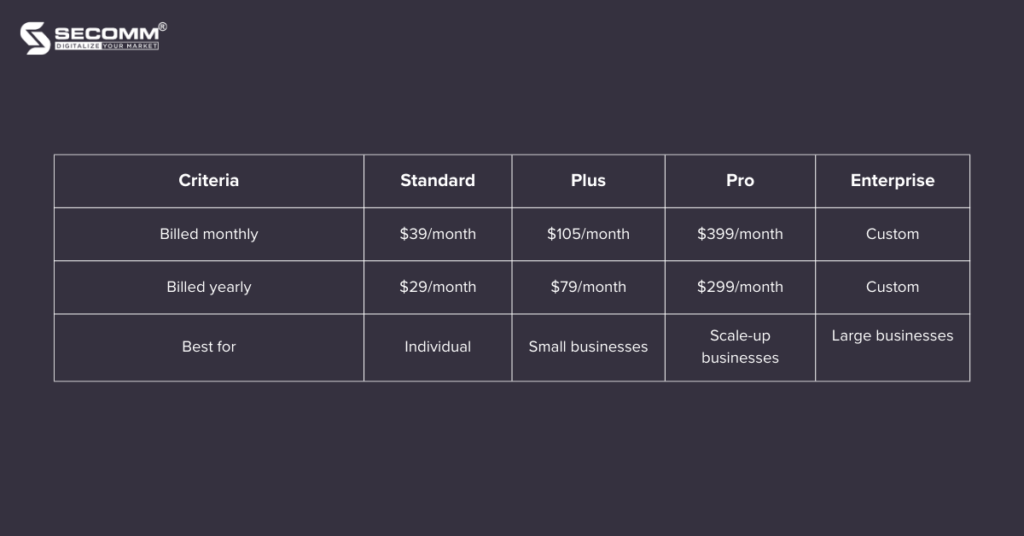
WooCommerce
WooCommerce, a free and open-source WordPress plugin, enables brands to integrate eCommerce functionality into their existing WordPress websites.
With just a few clicks, the WooCommerce plugin helps convert a standard WordPress site into a fully-featured eCommerce platform, complete with essential features and easy customization.
Learn more: 20 websites using WooCommerce
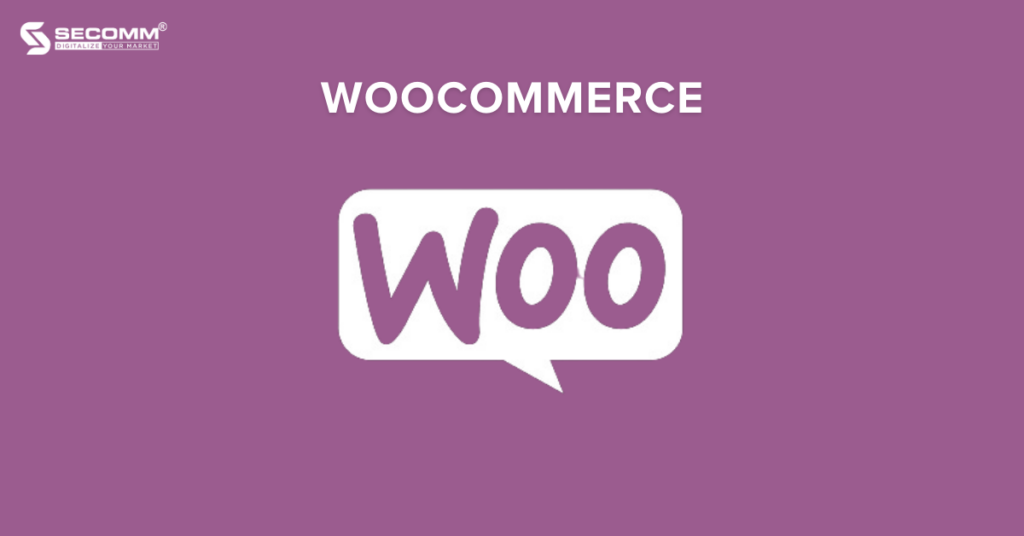
Pros:
- Free and open-source
- Seamless integration with WordPress
- User-friendly interface
- Large user community
- In-depth analytics and reporting
- Support for various products and payment methods
Cons:
- Lack of support for technical and security issues
- Some integrations demand advanced technical skills
- Relies on the WordPress system
- Multilingual deployment may sometimes have limitations.
- Potential costs may accrue over time
Core feature:
- Multi-marketplace selling
- Selling a diverse range of products
- Remote operation with a mobile app
- Customization and expansion
- Blogging
- SEO
Pricing: Free to use. However, some integrations with other plugins may incur charges.
OpenCart
OpenCart is a globally popular open-source platform, powering over 900 thousand active websites worldwide. In Australia, it has gained popularity with more than 2 thousand active OpenCart websites, establishing itself as a favored open-source platform in the country, following Magento.
Founded by Daniel Kerr in 1998, OpenCart operates as open-source software, utilizing the PHP programming language. It currently offers two versions: Free (Free-to-use version) and Cloud Store (Paid version).
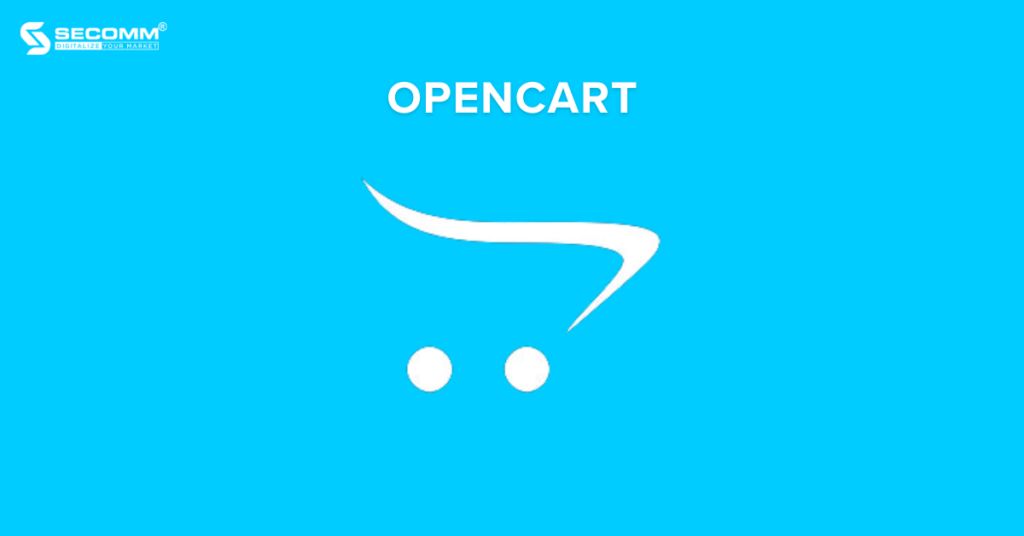
Learn more: Top OpenCart websites
Pros:
- User-friendly interface
- Extensive library of themes and apps
- Flexible customizability and scalability
- No transaction fees
Cons:
- Requires strong technical skills
- Lacks advanced extension features
- Many hidden costs
Core feature:
- Diverse payment and delivery methods
- Multilingual capabilities
- Multi-marketplace selling
- Seamless management of products, orders, and inventory
- Headless Commerce deployment
- Blogging
- SEO
Pricing:
Free for the Free version. For the Cloud Store version, the specific costs are as follows:
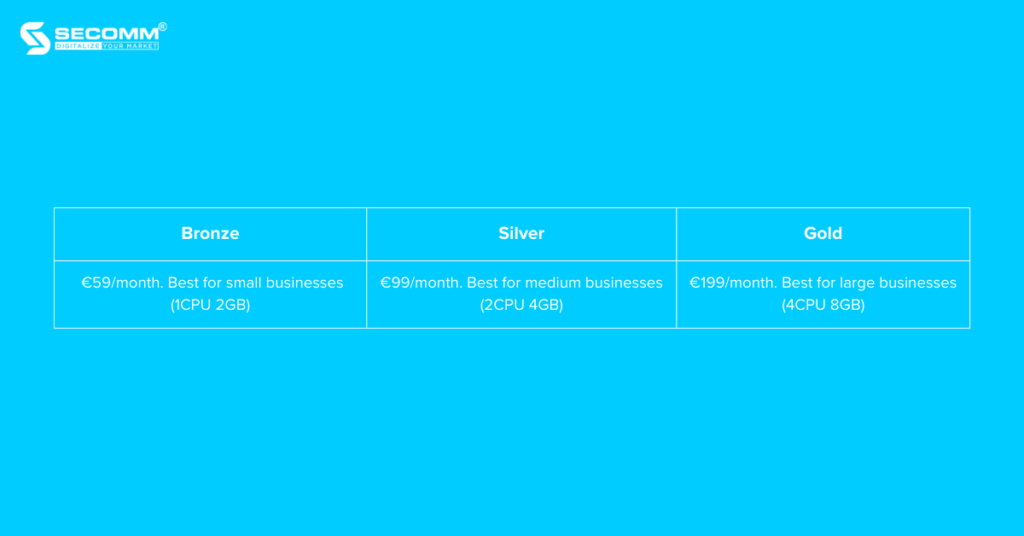
On Final Words
Above are 10 eCommerce platforms preferred by businesses in Australia when establishing their online stores. Each business will make its decision based on factors like scale, business model, and specific deployment requirements.
With over 10 years of experience collaborating with various Australian businesses such as Laybyland, RodShop, Trentham Estate, Jasnor, etc., to build eCommerce websites, SECOMM now possesses a team of highly skilled technical experts and a deep understanding of the Australian market.
For personalized advice on the best-suited platforms for your business, contact us or call the hotline (+84)28 7108 9908 today!
 2
2

 2,202
2,202

 0
0

 1
1
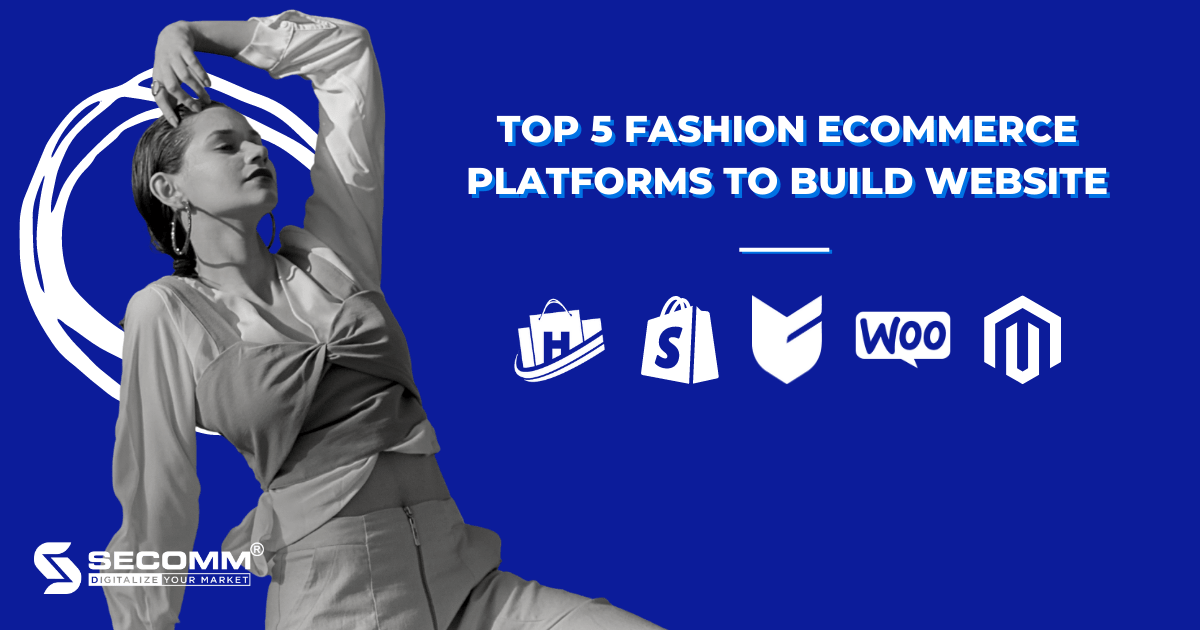
TOP 5 FASHION ECOMMERCE PLATFORMS TO BUILD WEBSITE
Despite the significant impact of Covid-19, the fashion industry is still on a roll, with the potential to reach $1 trillion globally by 2025 (according to Statista) thanks to eCommerce.
According to the IDEA 2022 research, the fashion eCommerce business in Vietnam is a highly competitive area, with up to 69 consumers using the eCommerce channel for every 100 fashion shoppers.
With the high potential of this commerce business, developing an eCommerce website is a must for success, necessitating the search for a platform on which to build a specialised eCommerce website for the fashion industry.
Businesses can use the following platforms to deploy fashion websites: Big Cartel, Haravan, Shopify, Woocommerce, and Magento.
Characteristics of fashion eCommerce
Eye-catching UI/UX design
UI/UX is a criterion that businesses frequently establish when creating an eCommerce website in order to develop a comfortable interface for a group of users who are passionate about fashion and maximise the capacity to engage with customers.

Comprehensive functional system
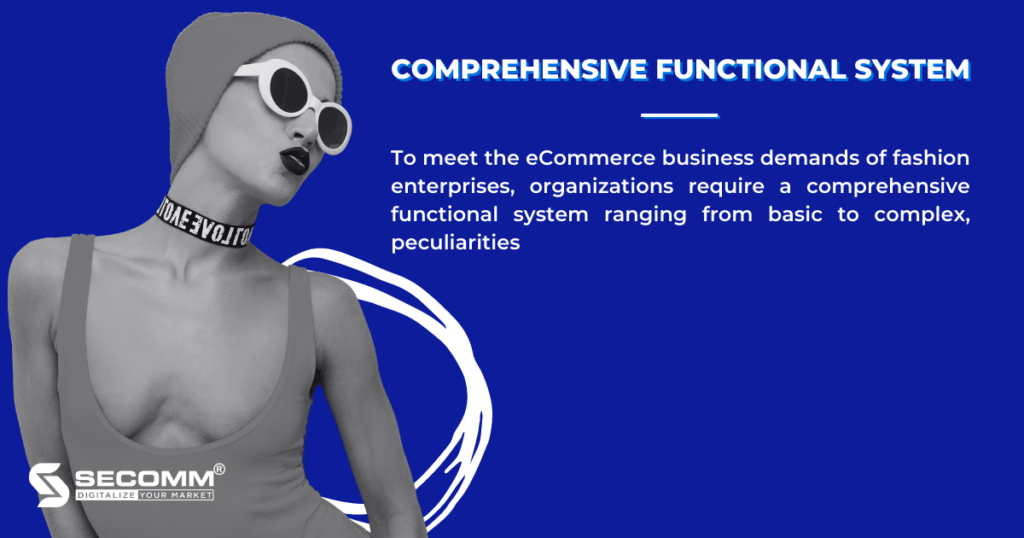
To meet the eCommerce business demands of fashion enterprises, organizations require a comprehensive functional system ranging from basic to complex, which includes:
- Catalog Management: Manage properties, pricing systems, inventory, photos, and videos to keep them running
- Content Management: Content development for CMS pages, image hosting, theme customization, and website design
- Customer Management: Control information, behavior, and consumption habits to build strategies for each specific customer group
- Sales Management: Set up and operate sales, order, payment, and shipping processes
- Marketing Management: Implement and optimize programs to attract potential customers with built-in support tools
- System Management: Seamless supply chain response with shipping navigation and automation management tools
- Store Management: Navigate and maintain your eCommerce business from online to offline
- Cart & Checkout: Manage shopping carts and process the next payment steps for customers
- Analytics and Reports: Monitor and measure eCommerce performance to give detailed reports to improve business efficiency
- Omnichannel sales allows business to follow customers across all channels, including eCommerce platforms, social networks, and social commerce websites.
- Multi-layer menu displaying a range of product categories
- Experiment using a variety of marketing strategies: Loyalty programmes, livestreaming, shopper entertainment, and affiliate marketing all assist to broaden methods of reaching out to potential consumers.
- Huge traffic to deal with enormous traffic volumes during “selling seasons”
Integration with a range of third-party services
To provide clients with a comprehensive shopping experience, fashion enterprises may frequently combine a number of payment options, shipping services, management software, and business analysis tools to enhance the e-commerce business system.
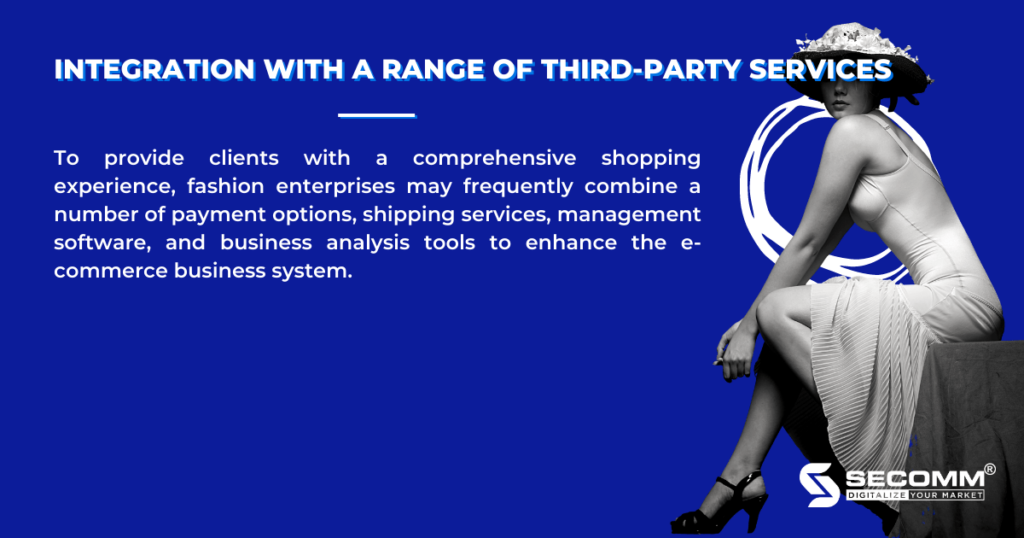
Numerous common payment options available today must be integrated into the website, including:
- Card payment: Domestic card, VISA, Mastercard, etc
E-wallets: MOMO, Zalopay, etc
Payment gateway: OnePay, VNPay, PayPal, etc
COD (Cash on Delivery)
Possibility to expand in the future
Often, firms at the start of a fashion business will not focus on the capacity to develop eCommerce websites in the future since platforms that enable this function are typically scarce. But, in terms of strategy, investing in a platform that supports this function can help organisations gain a competitive advantage over competitors in the market.
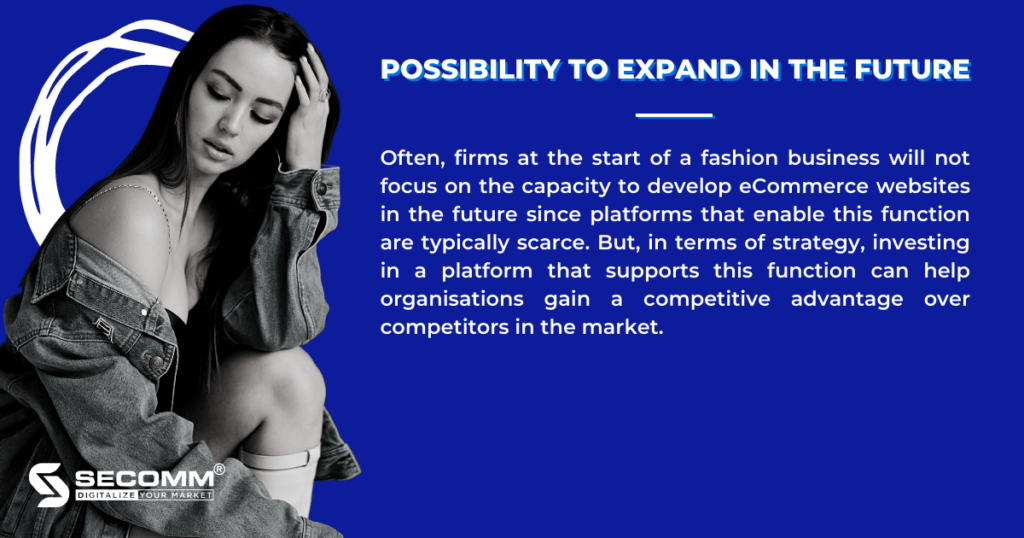
Top 5 fashion eCommerce platforms to build website
Haravan
Haravan is a well-known SaaS eCommerce platform in the Vietnamese industry, offering a variety of options for both enterprises and individuals. Haravan is used by a variety of websites, including Juno, Biti’s, Maison, and others.
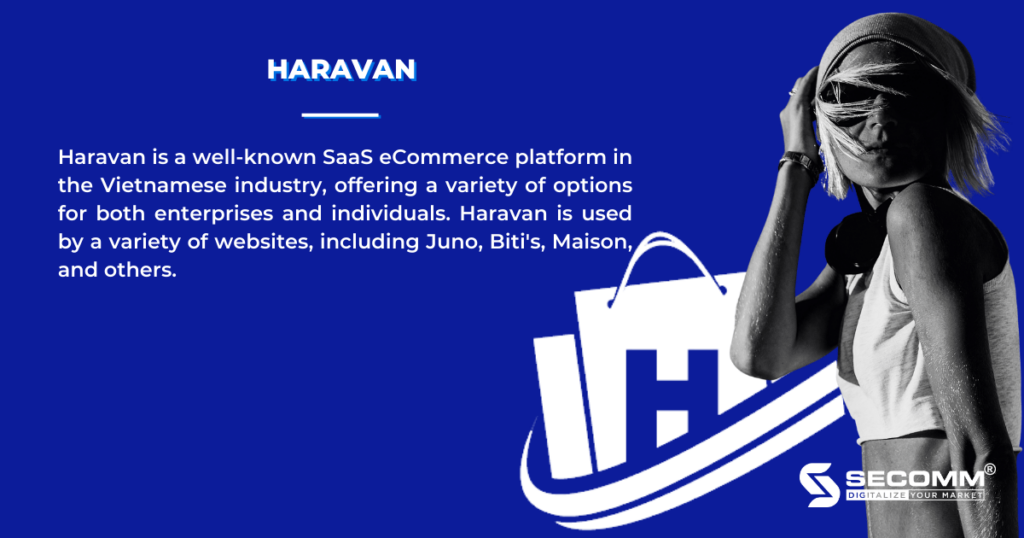
Platform review
Pro:
- A repository of readily available and diversified interfaces for the fashion industry
- A diverse feature, ranging from basic to complex, for starting an e-commerce business
Cons:
- The layout of existing templates causes duplicating, and it’s challenging to alter themes or create your own interface because doing so will have an adverse effect on the entire system
- The system of specific functions for the fashion sector is still limited
- Only integrated with services/utilities located in Haravan’s ecosystem
- Because it is a SaaS platform, it will be difficult for Haravan to expand the website in the future
→ Rating: 2/4
Haravan is suitable for start-up furniture businesses or SMEs (small and medium-sized enterprises) with operations mainly in Vietnam.
Pricing
Haravan is considered to have a reasonably low and diverse eCommerce website implementation cost for various businesses:
- Standard: 200.000 VND/month for personal sellers
- Pro: 600.000 VND/month for businesses that want to deploy Omnichannel
- Grow: 1.500.000 VND/month with the advantage of automating programs to take care and resell customers
- Scale: 3.000.000 VND/month for building loyal customers
Tuy nhiên, doanh nghiệp nên suy xét khi sử dụng Haravan trong dài hạn vì chi phí giấy phép sử dụng và các tiện ích mở rộng sẽ ngày càng tăng theo thời gian sử dụng.
Deployment time
However, businesses should consider when using Haravan in the long term because the cost of licenses and extensions will increase over time.
Shopify
Shopify is a SaaS ecommerce platform favored by the international ecommerce business community because of its fast implementation time and reasonable starting cost.
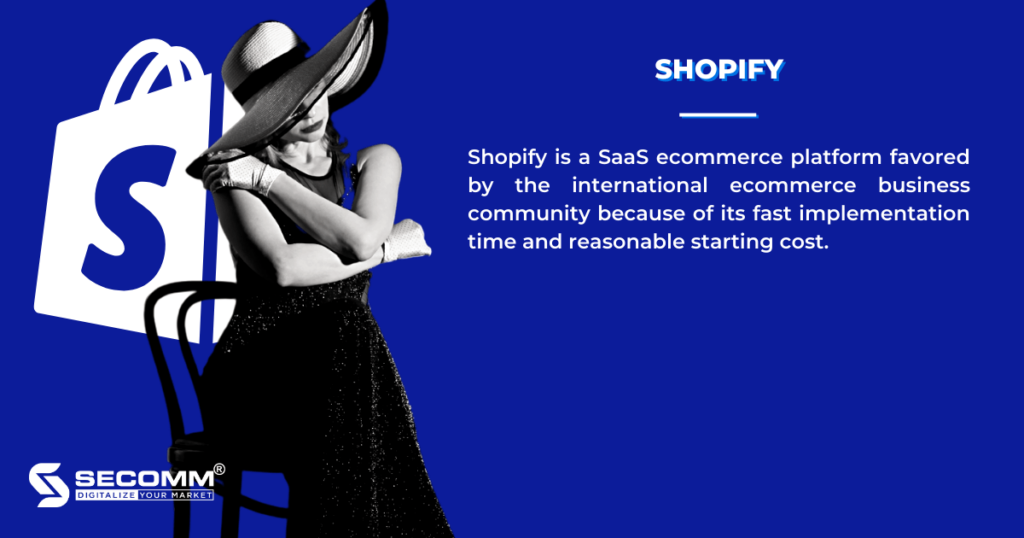
Platform review
Pro:
- Having a large selection of templates ideal for the fashion industry
- Functional system from basic to advanced, supporting eCommerce business
Cons:
- The layout of existing templates causes duplicating, and it’s challenging to alter themes or create your own interface because doing so will have an adverse effect on the entire system.
- The system of specific functions for the fashion sector is still limited.
- More third-party services than Haravan, although still only integrated with services available in Shopify’s app store.
- Because it is a SaaS platform, it will be difficult for Shopify to expand the website in the future
→ Rating: 2/4
Shopify is considered suitable for start-ups or SMEs with global operations.
Pricing
Starting an eCommerce business using Shopify is quite inexpensive at beginning, with several options:
- Basic Shopify: $29/month appropriate for start-ups with limited sales volume
- Shopify: $79/month suitable for growing internet companies
- Advanced Shopify: $299/month ideal for growing enterprises that require comprehensive reporting and analytical capabilities
- Shopify Lite: $9/month perfect for companies who wish to add sales and payment buttons to their current website or blog.
- Shopify Plus: $2000/month provides advanced eCommerce solutions for large businesses that need to process large volumes of orders
Nevertheless, the long-term cost of utilising Shopify will rise owing to rising costs for extensions, yearly usage fees, and % per transaction on the system.
Deployment time
The typical time to develop an e-commerce website is 1-7 days or more, depending on the system’s complexity.
Big Cartel
Big Cartel is a platform that assists in the creation of specialised eCommerce websites for the fashion industry or for art goods such as ceramics, paintings, and photographs. Big Cartel is used by several websites such as Atakontu, Indikidual, and others.
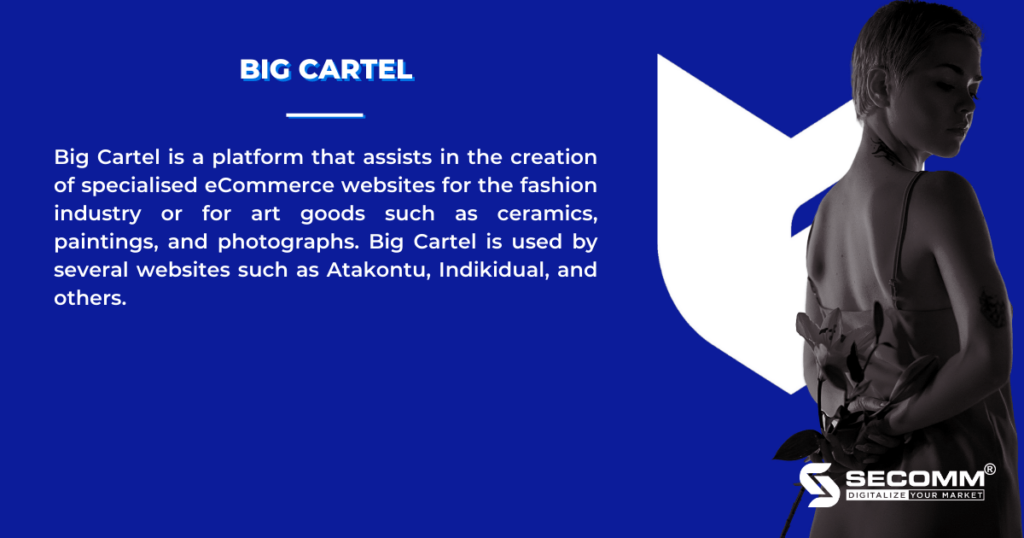
Platform review
Pro:
- Wide variety of themes for the arts, including the fashion industry
- Comprehensive functional system: basic, advanced, specific
Cons:
- Only services accessible in Big Cartel’s app store are incorporated.
- Because it is a SaaS platform, future expansion of the website will be tough to plan.
→ Rating: 2.5/4
Big Cartel will be appropriate for startups, SMEs, or new e-commerce participants that need to handle the complicated “issue” of fashion eCommerce.
Pricing
Website setup expenses are modest, with few possibilities for solution packages such as Haravan or Shopify:
- Package 1: Free for businesses that need to experience
- Package 2: $9.99/month suitable for businesses with a limit of 50 products
- Package 3: $19.99/month suitable for businesses with a limit of 500 products
Deployment time
Big Cartel allows you to develop a fashion e-commerce website in as little as 1-2 weeks, depending on the system’s complexity.
WooCommerce
WooCommerce is an open source platform, as a WordPress plug-in introduced in 2011 and allows businesses to use completely free. Popular websites using WooCommerce in Vietnam include Hai Trieu, Orchard, etc.
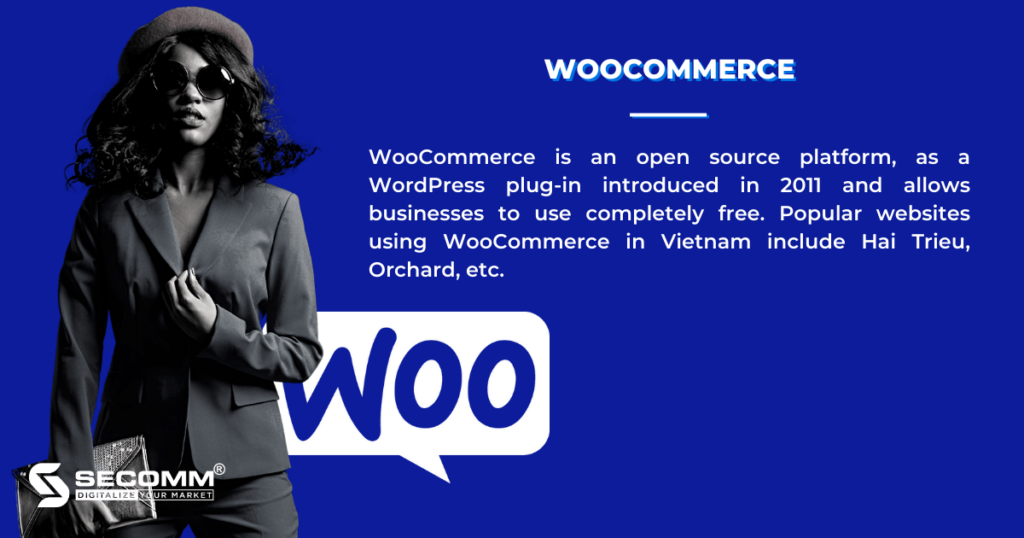
Platform review
Pro:
- There are several free and paid themes for the fashion industry available from the WordPress and WooCommerce community that are simple to adapt or develop.
- eCommerce functional system ranging from basic to sophisticated
- Simple connection with a wide range of third-party services
- Businesses may plan to extend their website in the future because it is a source code platform
Cons:
- The functional system is still restricted in terms of fashion-specific elements.
- Scalability is not very great in comparison to other open source systems like as Open Cart, Magento, and others.
→ Rating: 3/4
WooCommerce is suitable for fashion businesses who are used to WordPress before and are in need of developing an eCommerce system.
Pricing
Because it is an open source platform, fashion firms can use it for free; nevertheless, businesses must pay development costs while utilising the platform, such as:
- Domain: $15/year
- Hosting: $120/year
- SSL Certificate: $50 – $300/year
- Website development: $1,000 – $3,000 depending on the complexity of the system
- Extensions: $10/utilities
- Website maintenance and upgrade costs: $200/year, depending on the cooperation unit
Deployment time
An eCommerce website will take longer to create than the previous three platforms since it must be constructed from the ground up, which will take at least 1-3 months.
Magento
Magento is an open source platform with 2 versions: Magento Open Source (free) and Magento Commerce (paid). Some websites are using Magento such as Canifa, Hoang Phuc International, OnOff, etc.
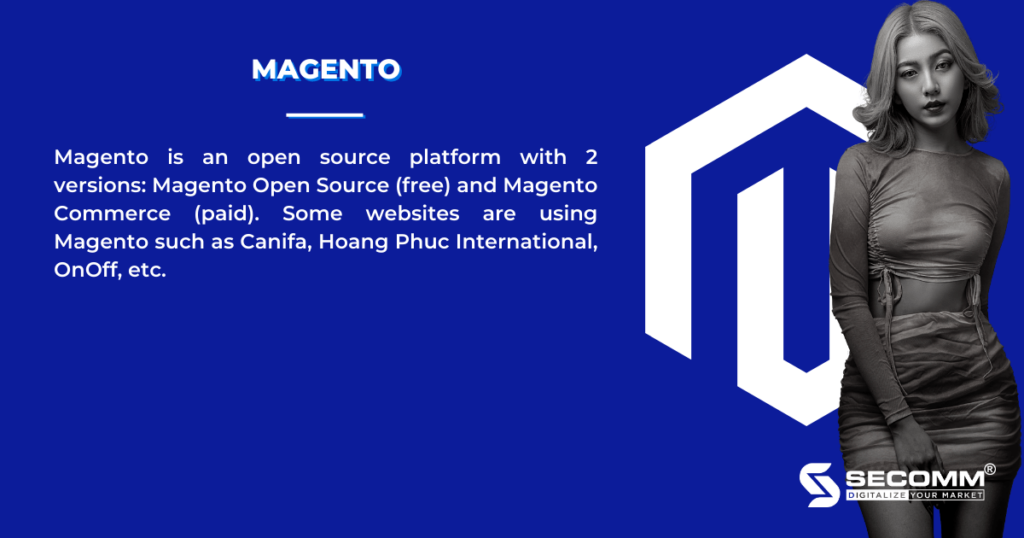
Platform review
Pro:
- Numerous fashion-specific themes are available from the worldwide developer community, marketplace, and Magento website developers, allowing businesses to use current themes or quickly alter them to meet their unique needs. Create your own user interface.
- Complete functional system: fundamental, advanced, and specific
- Simple connection with a wide range of third-party services
- Excellent scalability: multi-language, currency, and easy feature development in the future
Cons:
- There is no theme repository from Magento to support businesses
→ Rating: 4/4
Magento is appropriate for a wide range of fashion business types, including B2B, B2C, and B2B2C, as well as a wide range of business sizes, including startups, SMEs, and huge corporations. Nevertheless, because the cost of deploying Magento is sometimes very high, Magento is favoured by major organisations.
Pricing
Magento Open Source, like WooCommerce, is an open source platform, therefore it is free to use; nonetheless, businesses must consider the following costs:
- Domain: $15/year
- Hosting: $120/year
- SSL Certificate: $50 – $300/year
- Website development: $1.800 – $10.000 depending on the complexity of the system
- Extensions: $60 – $600/utilities
- Website maintenance and upgrade costs: $200/year, depending on the partner
Businesses will be working directly with Magento’s development team for Magento Commerce, thus they will have to pay licence fees as well as certain additional charges such as:
- Licenses: $22.000 – $125.000/year
- Domain: $15 – $400/year
- Hosting: $500 – $6.500/year
- SSL Certificate: $50 – $300/year
- Website development: $10.000+
- Extensions: $60 – $600/utilities
Deployment time
A complete Magento project typically requires 3 to 6 months of deployment time, with some projects requiring up to a year. The reason for this is the complicated functioning structure and the lack of Magento experts.
Summary
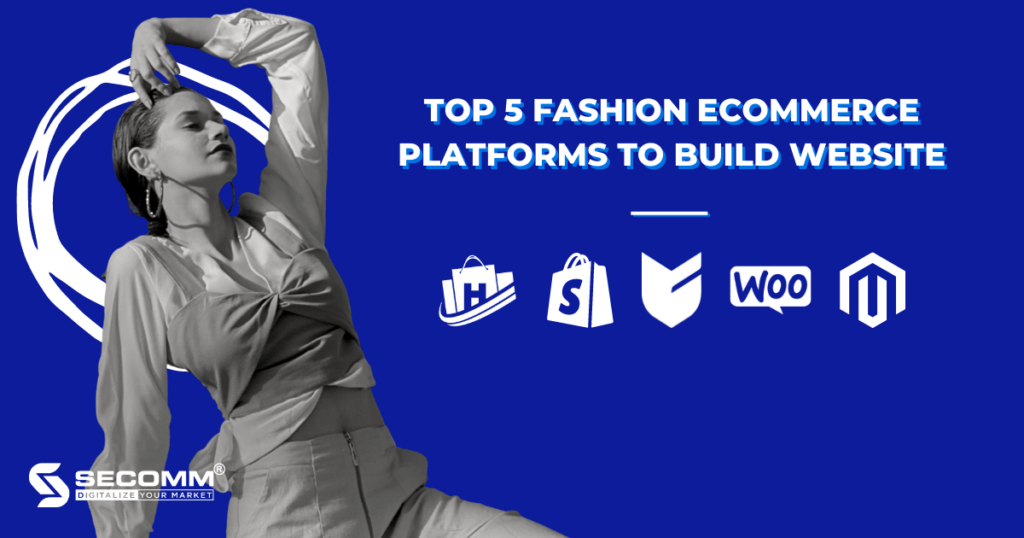
 2
2

 1,866
1,866

 0
0

 1
1



